Hello. This is a new correspondent, Hanes.![]()
![]()
Up to now, we have featured Hatchobori's recommended shops such as Cawaii Bread & Coffee and ROAR COFFEE HOUSE & ROASTERY in two articles.
Hatchobori is conveniently located near Tokyo Station, but did you know that there are seven wonders in such a place?
The origin of this Seven Wonders dates back to the Edo period, when there was a powerful and concentric mansion, and is one of the things that vividly convey their humanity and life.![]()
This time, I would like to introduce the Seven Wonders along with modern stories.
■There is no grave because there is a temple
In the early Edo period, it was called "Hatchobori Temple Town" outside the samurai area of Hatchobori.
There were many temples, but it was located in Okazaki-cho, Nishi Hatchobori at the time following the great fire of the Meiryaku era.
The only temple left Gyoenji, and other temples moved away from the center of Edo.
Gyoenji mainly did missionary work at the end of Honganji, and did not have a tomb.
He seems to have come to be said like this.![]()
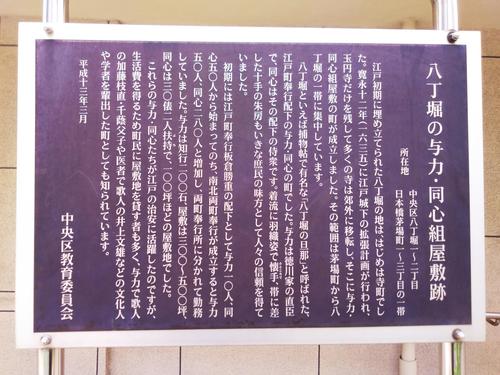
It was a story hundreds of years ago, so I thought that the only temple had disappeared now, but Tamaenji (Jodo Shinshu) still exists.![]()
Since it was relocated after the Meiji Restoration, it was not in its original place, but I was impressed by the fact that it remained in the present day.![]()
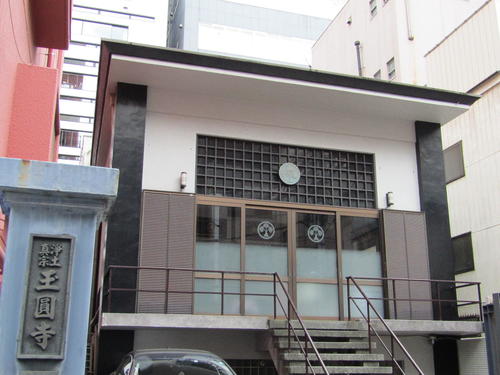
■There is no wife and no lord
A thin-paid power and concentric lived by renting a part of the land he was given.
The concentric lends to merchants such as liquor stores and rice shops, while the power lends to Confucian scholars, painters, and doctors.
Although it was a samurai area, it was treated as a town area.
Because they were trusted and intimacy, they were
People in the town called "husband" instead of "dono" which is the word of "wife".![]()
This is also depicted on the panel under construction currently seen at Kuyasu Bridge.![]()
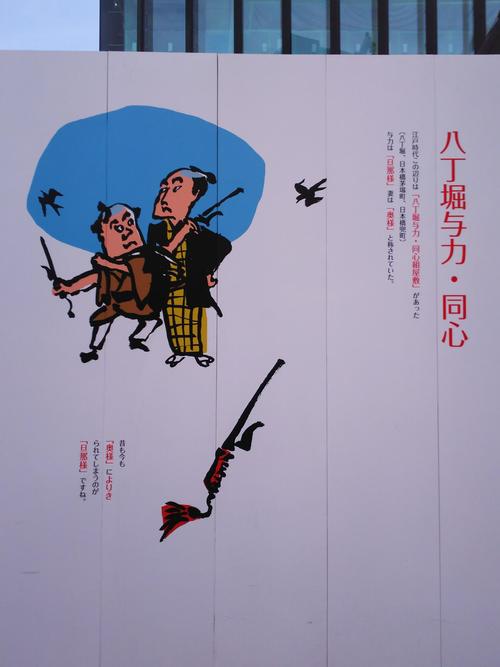
■The neck is connected with gold
Power and concentric were often driven by the people of the town.
It was said that the neck was connected by bribery![]()
■The entrance of rice
At the time of the arrest of Tadaya Maruhashi, the rice was inconcentrated with him and seriously injured.
The magistrate, who knew it, said that he would give him hope because he would give him a reward.
He couldn't honestly say his desire to be empowered, and said he wanted to set up the entrance.![]()
For he was only allowed to set up an entrance, not to be empowered later.
It is based on an episode that I was ashamed and set up the entrance on the back instead of the front.![]()
■ladies' bath's sword
The people of Hatchobori who are always taking care of their strength and concentric.
For those who like morning baths as well as Edokko, the women's baths with no guests were opened in the morning.
I thought I would take a leisurely bath before commuting to work.![]()
They came with their swords, so they had a sword hook in ladies' bath only in the morning.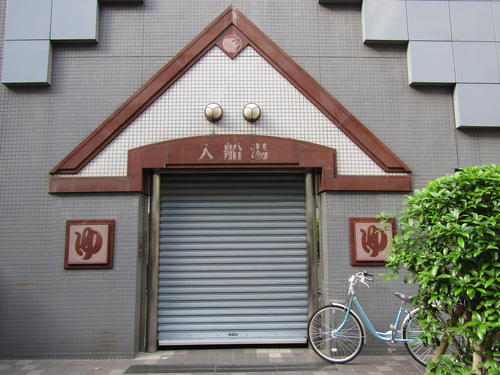
For me, I didn't think there was a public bath in central Tokyo today.
I still remember the shock of finding Irifune hot water by accident.![]()
When I looked into it, there are currently nine public baths in Chuo Ward.
Founded in 1863, Kinharuyu is one of the three public baths that have continued since the Edo period.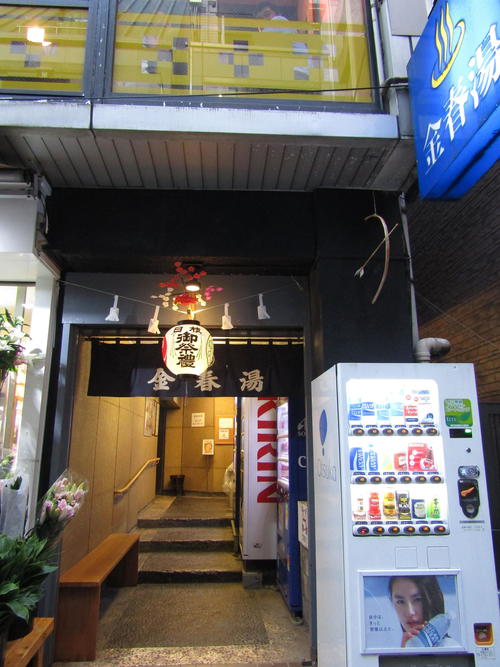
And at "community contact public bath" held twice a month (2nd and 4th Friday)
Residents and workers in the city can take a bath for 100 yen, usually for 460 yen for adults.![]()
(However, it is free for those who bring a certificate of respect for the elderly and elementary school students and younger.)
Depending on the season, you can also enjoy shobuyu and yuzuyu.
On the day of the public bath on October 10, there are also public baths where lavender baths appear.![]()
Why don't you relax in a bath with a sense of openness sometimes?
Specifically, please see central bath association official site (http://www.268chuou.com/).
■There is no guardian of children and travelers because there is Jizo Bridge
It can be interpreted that Jizo was moved somewhere from the side of the bridge, and only the bridge remained.
The park named Jizobashi remains now...![]()
Maybe the day when you can find Jizo at that time!
■There is a ghost in the demon's house
There is a high wooden fence in the powerful mansion between Kayabacho 1-2 chome.
After a little further, it seemed to be a terrible dark road.![]()
According to the Kaei era diary abstract, it is called a ghost Yokocho, and a ghost with a white neck appeared every night and pulled the sleeves of passers-by.
So, was the place around the powerhouse really a spiritual spot?![]()
It is said that the true identity of the ghosts concerned was women working in the night world at that time.
Well, I have introduced you to the Seven Wonders so far.
As a matter of fact, there are more than seven of them.
It is reported that there were other "households without a sentence" and "Japanese lantern Kake Yokocho".![]()
From such a story at that time, a glimpse of Chuo-ku, where power and concentric lived.
You can learn about the remnants of Edo that live in modern times.
When walking around Hatchobori, it's fun to look for such remnants.![]()
[References]
Chuo-ku Board of Education Secretariat Social Education Division (1989) "Talking the old days of Chuo-ku (1)-Hachichobori--Tsukudajima-".

